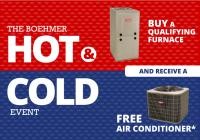Millions of homeowners are living in polluted air and don’t even know it, and some of them are even in Gibsonia. In fact, the quality of air inside homes is a significant factor influencing the health and wellbeing of millions annually. The World Health Organization estimates that 1.6 million people die every year as a result of poor indoor air quality. That makes it the 8th most common risk factor for death in the world and a huge contributor to cancers and other respiratory health problems.
So why is indoor air quality such an issue? Consider for a moment what a home does. At its core, a home is designed to keep you and your family protected from outside threats. It does that with solid walls, tightly sealed windows and a well-built roof over your heads. But the same technology that has made homes better sealed than ever also contributes to safety and health problems for residents of those homes by trapping air pollutants inside.
What’s at Stake?
The most common indoor air pollutants are mere irritants. Things like pollen, dust and dander are uncomfortable but don’t necessarily make anyone deathly ill. However, when a home is sealed up too tightly and the air isn’t filtered and cleaned regularly, the result can be downright dangerous to the occupants. Those seemingly innocuous pollutants suddenly make up a much larger percentage of the air inside.
In some cases, according to the WHO, the amount of smoke and other particles inside the home can be up to 100 times higher than what is considered safe outside. Now consider the other pollutants that can be inside the house. If pollen and dander cannot get out, what about exhaust from your stove, radon gas in your basement or mold spores in your ductwork.
You’re breathing all of it and the result is a significant increase in health risks for diseases like pneumonia, respiratory disease, and asthma – all of which are highly dangerous to anyone, but especially children and the elderly.
Solutions Abound
Luckily, this is not a problem you must deal with indefinitely. Modern HVAC systems integrate advanced ventilation technology, air filtration and air cleaning systems to remove the vast majority of these pollutants. But, first, you need to have them installed. It’s just a matter of finding the right contractor.


